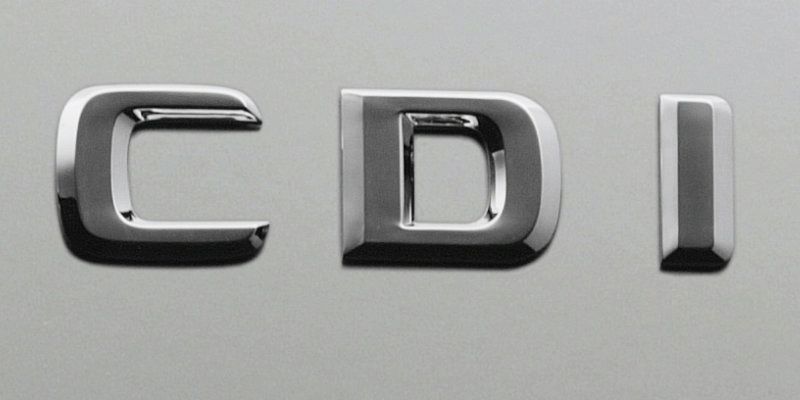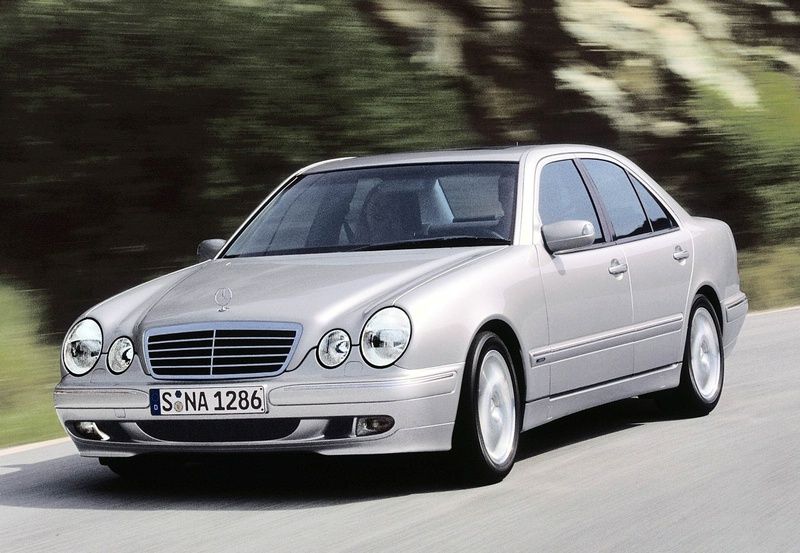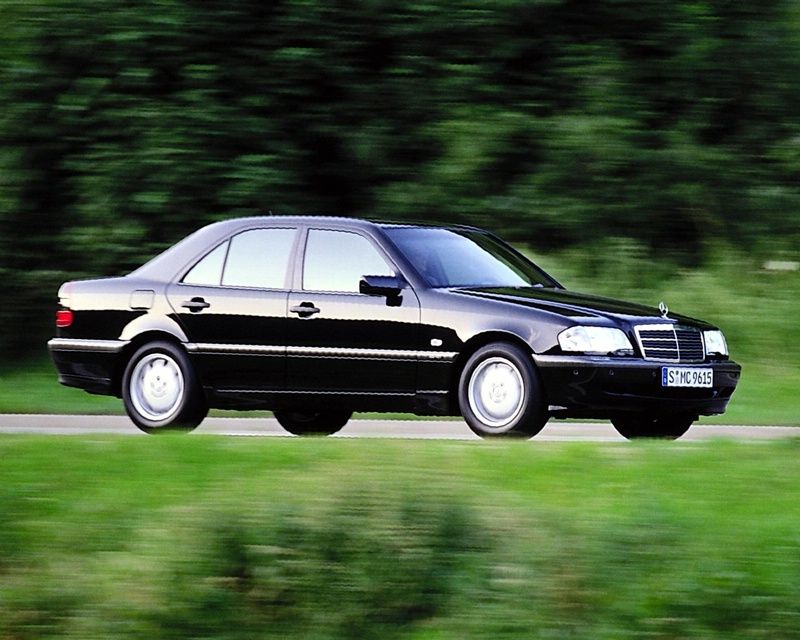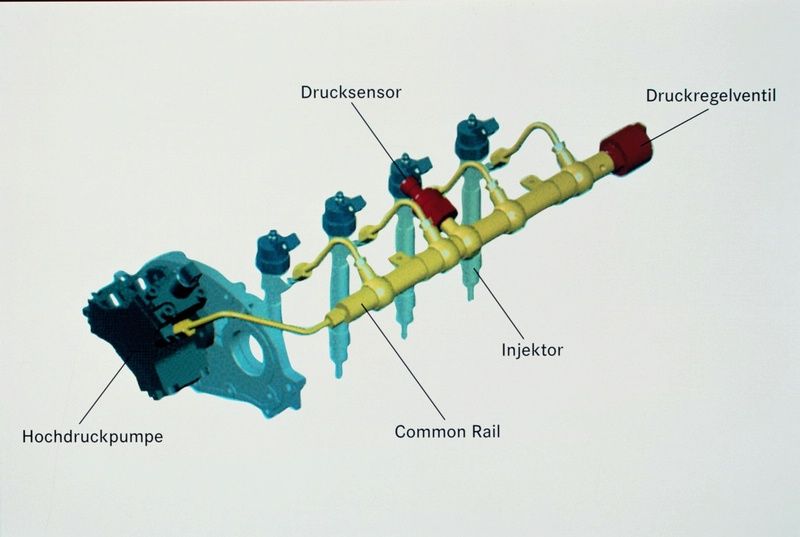Ten years ago, Mercedes-Benz ushered in a new era of diesel engines in passenger cars, with "common rail direct injection" technology, first used in the Mercedes-Benz C-Class (202 series). CDI engines have a fuel line in the form of a central pressure reservoir (common rail), from which fuel is released into the cylinders via solenoid valves as required. Common rail technology made it possible to design smooth-running engines with low emissions and high torque, and quickly became established as the new standard for passenger car diesel engines.
The latest Mercedes-Benz BLUETEC engines for passenger cars are also based on CDI technology. The outstandingly clean-burning and efficient BLUETEC engine made its passenger car debut in North America in 2006, proving so successful that the Mercedes-Benz E 320 BLUETEC was elected "World Green Car of the Year". The first passenger car model using this technology for the European market, the E 300 BLUETEC, will be launched at the end of 2007. In the E 300, Mercedes-Benz has managed to bring emission levels down even further, without any sacrifices in fuel economy. BLUETEC technology makes the diesel engine one of the cleanest and most efficient forms of propulsion the world has ever seen. The E 300 BLUETEC already meets the EURO V standard which does not come into force until September 2009.
IAA 1997: Debut of CDI technology
At the Frankfurt Motor Show (IAA) in September 1997, Mercedes-Benz launched the station wagon version of its new C 220 Turbodiesel. While previous Mercedes-Benz cars had also been described as turbodiesel models, this time the familiar name concealed a vehicle that was fundamentally different from its predecessors, and it duly became known as the Mercedes-Benz C 220 CDI. The new station wagon – along with the corresponding sedan – was the world’s first production car to be fitted with a diesel engine with direct injection based on the common rail principle. Its 92-kW (125-hp) four-cylinder OM 611 engine developed an impressive 300 Newton meters from just 1800 rpm. The C 220 CDI was thus the highest-torque engine in its displacement category and also set new standards in fuel economy and emissions. The outstandingly refined characteristics and sprightly performance of this diesel engine were mainly attributable to the new common rail technology, developed jointly with Bosch. The common rail system differs in several important respects from the traditional design of prechamber diesel engines, and also from other direct diesel injection methods. Whereas previous conventional systems had to generate the pressure required for each injection separately, CDI engines have a common fuel line (or common rail) in which pressure is maintained at a high level by a separate high-pressure pump. This forms a pressure reservoir from which the fuel is distributed to the injection nozzles via solenoid valves. The vastly improved mixture formation process in comparison with older diesel engines is the result of high injection pressure ratings of up to 1350 bar – available even at low engine speeds – and variable injection control. The electronic engine management calculates the fuel requirements separately for each cylinder, according to the driving situation. CDI results in lower fuel consumption and exhaust emissions in comparison with other engine technologies, along with higher performance values.
The outstandingly refined characteristics and sprightly performance of this diesel engine were mainly attributable to the new common rail technology, developed jointly with Bosch. The common rail system differs in several important respects from the traditional design of prechamber diesel engines, and also from other direct diesel injection methods. Whereas previous conventional systems had to generate the pressure required for each injection separately, CDI engines have a common fuel line (or common rail) in which pressure is maintained at a high level by a separate high-pressure pump. This forms a pressure reservoir from which the fuel is distributed to the injection nozzles via solenoid valves. The vastly improved mixture formation process in comparison with older diesel engines is the result of high injection pressure ratings of up to 1350 bar – available even at low engine speeds – and variable injection control. The electronic engine management calculates the fuel requirements separately for each cylinder, according to the driving situation. CDI results in lower fuel consumption and exhaust emissions in comparison with other engine technologies, along with higher performance values.
CDI engines also run very smoothly, mainly because of so-called pilot injection. This refers to the preheating of the combustion chambers through the ignition of a small quantity of diesel fuel injected into the cylinder a few milliseconds before the actual fuel injection. This results in a less abrupt increase in pressure and temperature during main injection, and the engine runs more quietly. Along with the common rail technology as such, the Mercedes-Benz engine developers also incorporated some other advanced design features in the new CDI engines, e.g. the use of four-valve technology in the four-cylinder engine of the C 220 CDI.
December 1997: Market launch of the Mercedes-Benz C 220 CDI
In December 1997, Mercedes-Benz launched the new C 220 CDI on the market, in sedan and station wagon variants. Comparisons with the predecessor model speak volumes: 30 percent more power, twice the torque, and ten percent lower fuel consumption. As well as creating an incredibly economical compression ignition engine, CDI technology also produced an agile and powerful car with sports performance characteristics. The second CDI model – the C 200 CDI – followed six months later, replacing both the sedan and station wagon variants of the C 220 Diesel with naturally aspirated prechamber engines. This second CDI C-Class model was powered by a derated version of the engine used in the C 220 CDI, with the same displacement. The most dramatic improvement over the previous prechamber engine lay in the high torque developed at low engine speeds. The CDI engine also offered substantially better performance as well as lower fuel consumption and exhaust emissions.



